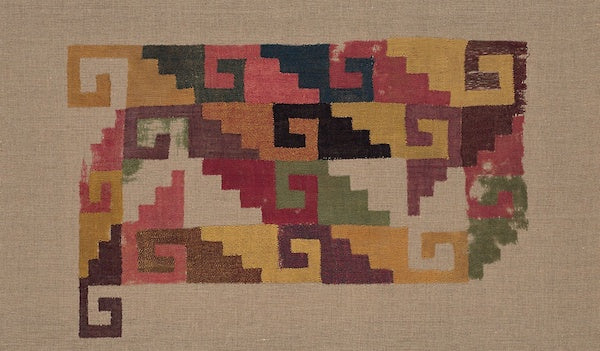
Super/Natural
That the land that now constitutes Peru has been a hot-bed of textile artistry for more than two millennia is no secret. But the sheer scale of production and the extraordinary sophistication of textiles from this region is nonetheless astonishing. That is the biggest takeaway from an exhibition that offers a dazzling, in-depth look at five historical cultures dating back to around 500 BC – the Paracas, Nazca, Chancay, Lambayeque and Rimac – as well as artists in modern-day southern Peru and northern Bolivia. Super/Natural: Textiles of the Andes features 72 objects drawn entirely from the holdings of the Art Institute, which is particularly known for its collection of Andean textiles. At the core of that holding are 1,300 objects purchased in 1955 from a celebrated group of ancient artefacts assembled by Eduard Gaffron, a German ophthalmologist who lived in Peru in the late 19th and early 20th centuries.

While some of these textiles are regularly displayed as part of the museum’s Arts of the Americas display, about one-third of the works in this exhibition have never been shown before. The desire to show off these unseen treasures in a more extensive way was a key motivation for curators, Erica Warren and Elizabeth Pope. Proceeding chronologically and geographically, the exhibition moves from south to north Peru and finally into the highlands, with shifting shades of blue on the walls of the 3,000-square-foot textile gallery suggesting the changes in location.

Fans of ceramics will find plenty to admire in this show, with a sprinkling of nine first-rate clay works providing useful complements to the main textile offerings. Striking geometric patterns run through much of this show, and they go far in explaining why these works hold such appeal for modern audiences. Fans of geometric abstraction, a style developed in the early 20th century, can immediately identify with these designs. For that reason, as well as the intrinsic connection between function and design in these works, they were studied and admired at the German Bauhaus and other centers of artistic modernism.

While some of the works in this exhibition have received conservation, they are all in surprisingly good condition, especially considering the age of some of the oldest examples. Part of the region covered in this exhibition sits within the Atacama Desert, which runs for 600 miles along the Pacific coast of South America. It is one of the driest places in the world, and textiles that were buried there alongside the dead were well preserved. The show’s title Super/Natural derives from the interconnectedness in these Andean cultures between the natural and supernatural worlds.
Until 16 June 2019, Art Institute of Chicago, 111 South Michigan Avenue
Chicago, IL 60603, USA
Review by Kyle MacMillan.
To read more stories like this, subscribe to Selvedge here. Use the offer code BLOG for 10% off any fixed-term subscription (does not apply to recurring subscriptions).
